- Details
- Hits: 1931
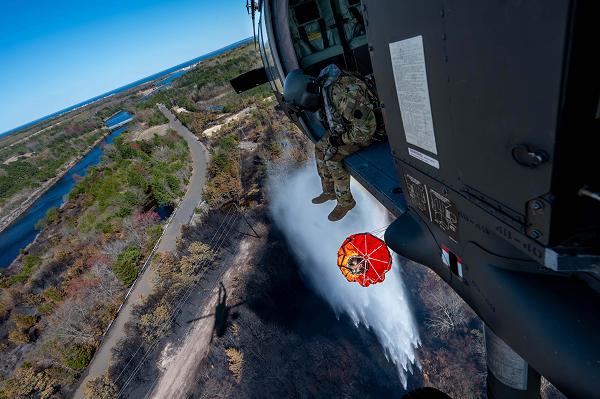
Ocean County, New Jersey. (May 1, 2025): As huge aircraft drop tons of water on wildfires raging across the country, one of the greatest firefighting weapons gets surprisingly little notice. In this photo by Seargeant Michael Schwenk, 1st Sergeant Timothy Witts, a crew chief with 1st Battalion, 150th Assault Helicopter Regiment, New Jersey Army National Guard, uses the Bambi Bucket system to extinguish flames from a UH-60M Black Hawk helicopter. The 150th was responding to requests from local authorities for help containing a 15,000-acre wildfire in Ocean City.
Based in Trenton, the New Jersey Guard also played a crucial role in the rescue and recovery efforts during the fire, which was the second worst in the last two decades. Comprised of more than 6,000 Citizen-Soldiers, the Guard has won acclaim for its role following Superstorm Sandy where more than 2,200 Soldiers and Airmen were mobilized. They rescued over 7,000 residents, provided security, transportation, and logistics, and delivered essential resources like meals and fuel. For their efforts, Guard members received the Humanitarian Service Medal.
- Details
- Hits: 2573
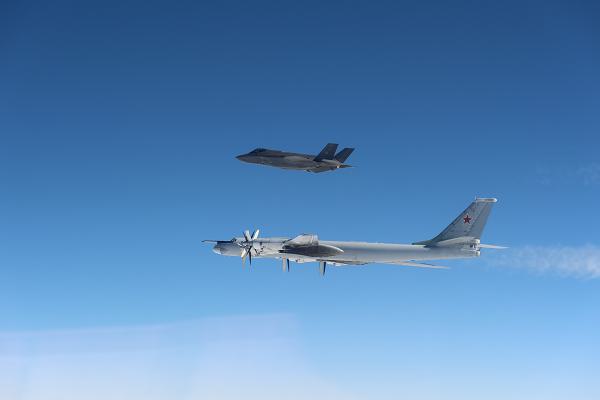
Bering Sea. (May 1, 2025): In this Defense Department photo, a U.S. Air Force F-35 Lightning II intercepts a Russian Tu-95 “Bear” strategic bomber in the skies near Alaska. Multiple F-35s were launched to intercept and monitor the Russian aircraft, which remained in international airspace roughly 250 nautical miles from Shemya Island in the western Aleutians. The North American Aerospace Defense Command (NORAD) noted that while this type of Russian activity within the Alaskan Air Defense Identification Zone is routine and not viewed as a threat, it is continuously monitored to safeguard the security of North America. The Tu-95 “Bear” is a four-engine turboprop-powered strategic bomber and missile platform that entered service in1952
This flyby by the Russians comes less than three months after American and Canadian fighter jets were scrambled to shadow multiple Russian warplanes that were spotted in the Arctic. In this incident, the Russian Bear remained in international airspace and posed no immediate threat to U.S. forces, however the frequency of such encounters is concerning.
- Details
- Hits: 1875
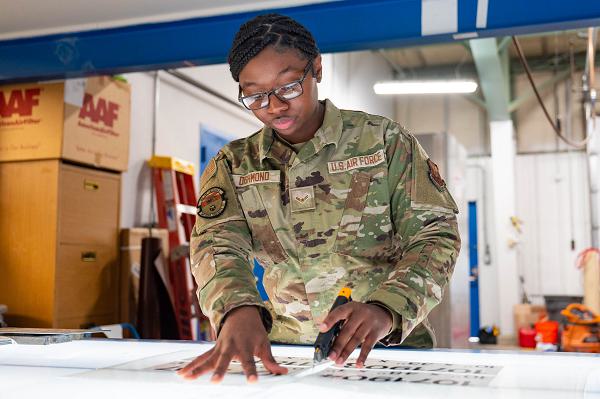
Malmstrom Air Force Base, Montana. (May 9, 2025): If the Air Force needs something built, anywhere in the world, they depend on the 341st Civil Engineer Squadron. In this photo by Senior Airman Mary Bowers, Structural Apprentice Airman 1st Class Alavinia Dishmond cuts a piece of vinyl to create custom signs that support base operations, safety, and communication.
The 341st is skilled at building construction including installing and maintaining essential utility systems such as water, electricity, and heating and air conditioning. The squadron operates, constructs, and maintains facilities on Malmstrom Air Force Base’s 220 missile complex sites that cover 13,800 square miles. In this role, the squadron manages engineering, military family housing, fire protection, disaster preparedness, and explosive ordnance disposal.
- Details
- Hits: 2206
PENTAGON, (May 15, 2025): On Capitol Hill yesterday, Navy Secretary John Phelan told lawmakers that increasing shipbuilding to better outfit the Navy, developing an accountable and innovative warfighter culture and improving the welfare of the fighting force were his top priorities.
Phelan, alongside Acting Chief of Naval Operations Adm. James W. Kilby, and Commandant of the Marine Corps Gen. Eric M. Smith, briefed the House Appropriations Committee's defense subcommittee on current challenges and their plans to address them.
"My North Star, or No. 1 priority as secretary, is the readiness of our sailors and Marines," Phelan said, adding that the priorities he outlined will guide his decision-making as he leads the department.
After Phelan was sworn in as the Navy secretary in late March, he visited troops and facilities in the Indo-Pacific region, the southern border, the USS Gravely, several military installations, as well as public and private shipyards.
"Rebuilding our hollowed-out maritime industrial base is a national security imperative, as outlined in the Restoring America's Maritime Dominance executive order signed by President [Donald J.] Trump," he said. "Over the past month, I visited ... eight shipyards across the nation's East Coast and the Indo-Pacific. I spoke directly with shipyard leaders and the hard-working tradesmen essential to our maritime operations. I now have a clear picture of where our shipbuilding dollars have been going, and [I] am developing a plan to fix what's broken."
Phelan told lawmakers that submarine building challenges include the complexity of the ship, workforce experience, supply chain issues and, in some cases, a lack of modernization at shipbuilding facilities. During his meetings with shipyard workers and industry leaders, he discussed the state of shipbuilding and identified ways to improve workflow.
"It was very interesting in some of [the leaders'] assessments of what they did not perceive to be as problems," Phelan said, adding that when he met with the workers, he received the opposite response.
His visit to a shipyard in Japan showcased the difference in shipbuilding processes. There, he found workers get the same productivity in one shift that American shipyards might get in three shifts.
"I believe that's for two reasons," Phelan said. "One, their average worker is 50 years old; it is a career ... they've been in that shipyard a very long time. Two, when I spoke to the welders in Japan, they ... spend zero time on paperwork. Our welders spend between 30% and 40% of their time filling out paperwork ... that is a problem."
Phelan said he saw positive things at U.S. yards that might be implemented across the rest of the U.S. shipbuilding industry to speed up things like U.S. submarine production.
"I do think we can get the calendar shifted left, but it's going to take a lot of hard work and a lot of effort," he said.
Kilby told lawmakers the Navy faces three challenges, and it is working to solve them with congressional assistance.
First, he said, is a shortage of approximately 23,000 sailors manning ships.
"Thanks to process improvements and targeted investments, we are on plan to reduce that number significantly by the close of fiscal year 2026," Kilby said. "We're committed to attracting and developing Americans who can innovate, solve hard problems and dominate in combat."
The Navy missed recruiting goals in fiscal year 2023 but raised its goals in fiscal year 2024 and then exceeded its target when it recruited more than 40,000 new sailors.
"[That's] the most since 2003, and we are currently on pace to exceed our recruiting goal for fiscal year 2025," he said.
Kilby said a second issue involves strain on the munitions industrial base. Ordinance expenditures in the Red Sea against the Houthis have highlighted challenges with manufacturing replacement munitions.
"The Navy is working with both our traditional [prime contractors] and new entrants to close this gap, developing kinetic and non-kinetic weapons at speed and at scale," he said.
In submitted testimony, Kilby said the Navy is investing in expanding capacity and adding new suppliers across its weapons portfolio, including rocket motors, warheads and engines.
Finally, Kilby said, platform readiness is a priority for the Navy.
"Our platforms are not as ready as they need to be," he said. "We set an ambitious goal to make 80% of our ships, submarines and aircraft combat surge ready by Jan. 1, 2027. To do that, we are reducing maintenance delays. We are improving manning, training, modernization and sustainment. In all of these efforts, consistent and predictable funding is foundational. We appreciate the continued support of this committee."
Smith said as the commandant of the Marine Corps, his top priority is achieving a 3.0 amphibious ready group/marine expeditionary unit presence. He added that this would mean the Marines have one amphibious ready group constantly deployed off the East Coast, one deployed off the West Coast and one sporadically deployed out of the naval force in Japan.
"The amphibious ready group with marine expeditionary unit embarked is the most versatile tool in our nation's arsenal," he said. "It is the Swiss Army knife of the joint force, and we're working closely with our Navy partners to maximize this capability."
Smith said accelerating force design is another priority for the Marines, adding that the Marines are in the implementation phase — integrating new technology, refining organizational structure and strengthening the joint force.
"Force design is our righteous journey to adapt to the changing character of war. The nature of war remains the same, but the character changes," Smith said.
Regarding quality of life, Smith said Marines want the basics. He told lawmakers, "Every Marine deserves a clean, safe place to lay their head at night. They don't ask for much, but they do ask for that."
Smith called the Barracks 2030 program the most consequential infrastructure investment in Marine Corps history. He noted that it will provide every Marine with safe, modern living conditions.
"And quality of life goes beyond our barracks," he added. "We're also investing in the well-being of Marine families, because retaining our Marines means supporting those who stand by them."
By C. Todd Lopez, DOD News
Published with permission of DOD
- Details
- Hits: 2027
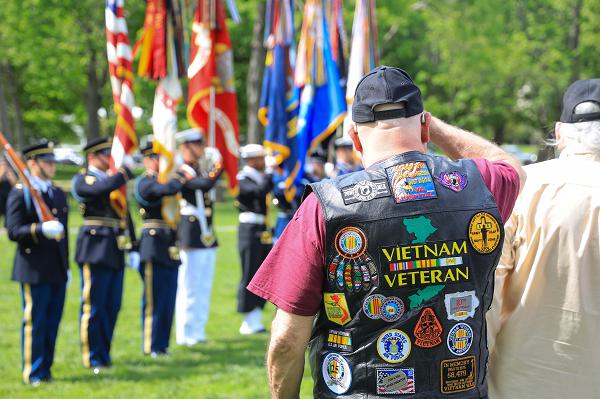
Washington, D.C. (May 8, 2025): In this photo by Army Sergeant Justin Rachal, service members assigned to the Joint Armed Forces Color Guard conduct a wreath-laying ceremony commemorating the 50th anniversary of the end of the Vietnam War. Unlike any other American conflict, Vietnam War veterans came home to an ungrateful nation. In the years since, America has come to grips with this unpopular conflict and the those that fought there.
The Vietnam War lasted ten years, from 1955 to 1975, which pitted the United States and its South Vietnamese allies against the Communist North Vietnamese who were backed by China. The war resulted in the deaths of over three million people, including nearly 60,000 Americans.
- Details
- Hits: 1638
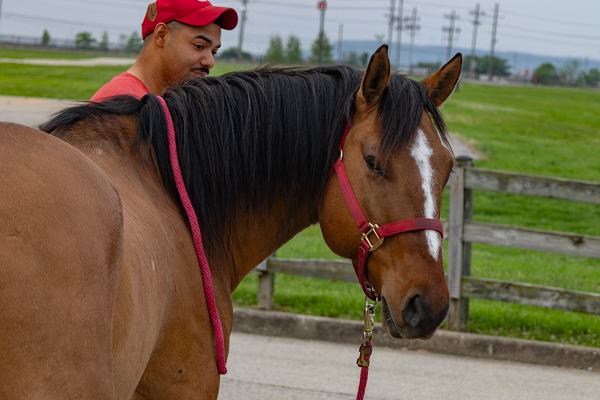
Louisville, Kentucky. (May 5, 2024): For the first time in history, spectators at the Kentucky Derby were treated to a sizzling performance by the Army’s 1st Infantry Division's Commanding General's Mounted Color Guard. In this photo by Sergeant Tyler Selige, a Soldier prepares his steed for the demonstration held at Churchill Downs to celebrate the service's upcoming 250th anniversary.
The Kentucky Derby, also known as "The Run for the Roses," is held annually on the first Saturday in May. It is one of the oldest and culturally significant sports events in American history. Meriwether Lewis Clark Jr., grandson of William Clark (of the Lewis and Clark expedition), is credited with founding the Louisville Jockey Club and Churchill Downs racetrack, where the Derby is held. The first Kentucky Derby was held on May 17, 1875.


